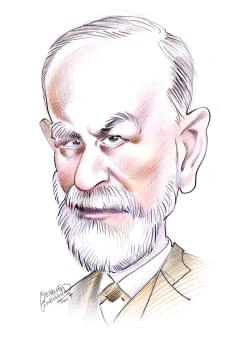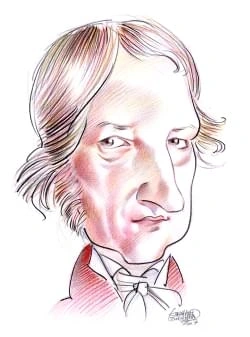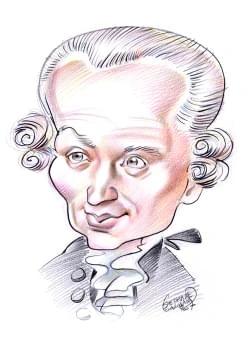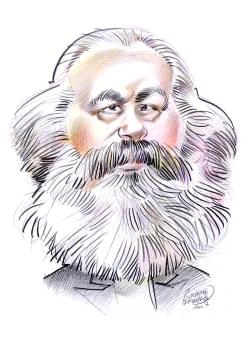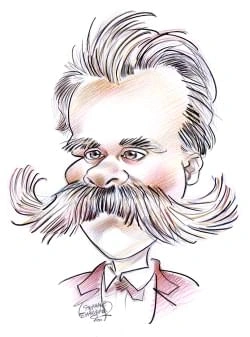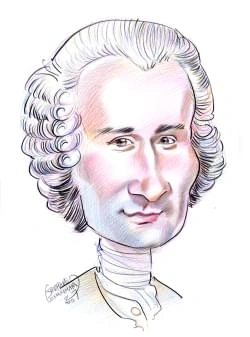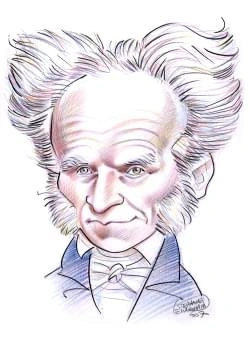699 résultats pour "rangées"
-
Afghanistan - country.
D Climate Most of Afghanistan has a subarctic mountain climate with dry and cold winters, except for the lowlands, which have arid and semiarid climates. In the mountains and afew of the valleys bordering Pakistan, a fringe effect of the Indian monsoon, coming usually from the southeast, brings moist maritime tropical air in summer.Afghanistan has clearly defined seasons: Summers are hot and winters can be bitterly cold. Summer temperatures as high as 49°C (120°F) have been recorded in thenorth...
-
Physics
I
INTRODUCTION
Physics, major science, dealing with the fundamental constituents of the universe, the forces they exert on one another, and the results produced by these forces.
Starting about 1665, at the age of 23, Newton enunciated the principles of mechanics, formulated the law of universal gravitation, separated white light into colors,proposed a theory for the propagation of light, and invented differential and integral calculus. Newton's contributions covered an enormous range of naturalphenomena: He was thus able to show that not only Kepler's laws of planetary motion but also Galileo's discoveries of falling bodies follow a combination of his ownsecond law of m...
- MRBM (medium range ballistic missile).
-
commun, chez moi bien dissimulé, celui des solennités
mondaines.
reçu desballes !Toutes criblées depetits points blancs !Une noce pourlarigolade queçareprésentait :au premier rang, en zinc, lamariée avecsesfleurs, lecousin, lemilitaire, lepromis, avecunegrosse gueule rouge,etpuis audeuxième rang des invités encore, qu’onavaitdûtuer bien desfois quand ellemarchait encorelafête. — Jesuis sûre quevous devez bientirer, vous Ferdinand ?Si c’était lafête encore, jeferais unmatch avecvous !...N’est-ce pasque vous tirezbienFerdinand ? — Non, jene tire pastrès bien......
-
Light - astronomy.
Each different frequency or wavelength of visible light causes our eye to see a slightly different color. The longest wavelength we can see is deep red at about 700 nm.The shortest wavelength humans can detect is deep blue or violet at about 400 nm. Most light sources do not radiate monochromatic light. What we call white light,such as light from the Sun, is a mixture of all the colors in the visible spectrum, with some represented more strongly than others. Human eyes respond best to greenlight...
-
L Auvergne (Travaux Personnels Encadrés – Géographie - Enseignements Pratiques Interdisciplinaires)
• Le socle de l'Auvergne est riche en ressources minières : du charbon dispersé dans de petits gisements et surtout de l'uranium. Les eaux qui traversent les formations volcaniques ont donné naissance au thermalisme . LACS ET COURS D'EAU • Alimentant les cours supérieurs de cinq émissaires principaux -Loire, Allier, Cher, Dordogne et Lot - , l'Auvergne possède un réseau hydrographique dense qui fait d 'elle le« château d'eau » de la France . • La lon...
-
South America - geography.
B Natural Regions Tierra del Fuego, ArgentinaUshuaia, on Argentina’s island of Tierra del Fuego, is the world’s southernmost city. Argentina claims part of the Tierra del Fuegoarchipelago, including the largest island, known as Tierra del Fuego or Great Island, and Staten Island. Chile claims the remainder ofthe islands in the territory.R. Van Nostrand/Photo Researchers, Inc. Rising abruptly from the northwestern and western coasts of the continent are the Andes. They consist of a single chain...
-
Laser.
their atoms into laser light. Consequently, they are the most powerful continuous wave (CW) lasers—that is, lasers that emit light continuously rather than in pulses. C Liquid Lasers The most common liquid laser media are inorganic dyes contained in glass vessels. They are pumped by intense flash lamps in a pulse mode or by a separate gas laserin the continuous wave mode. Some dye lasers are tunable, meaning that the color of the laser light they emit can be adjusted with the help of a prism lo...
-
-
Statistics
I
INTRODUCTION
Statistics, branch of mathematics that deals with the collection, organization, and analysis of numerical data and with such problems as experiment design and decision
making.
frequency, column (d), is the ratio of the frequency of an interval to the total count; the relative frequency is multiplied by 100 to obtain the percent relative frequency.The cumulative frequency, column (e), represents the number of students receiving grades equal to or less than the range in each succeeding interval; thus, thenumber of students with grades of 30 or less is obtained by adding the frequencies in column (c) for the first three intervals, which total 53. The cumulative relativef...
-
Nebraska - geography.
by natural resource districts to limit the rate of pumping for irrigation. C Climate Nebraska has a typical continental climate with wide seasonal variations in temperature. C1 Temperature Winter temperatures below -20°C (0° F) and summer temperatures in the upper 30°s C (lower 100°s F) are common. The average January temperature varies from about -7° C (about 20° F) in the northeast to about -2° C (about 29° F) in the southwest. The average for July, thehottest month, ranges from about 26° C...
-
Nebraska - USA History.
by natural resource districts to limit the rate of pumping for irrigation. C Climate Nebraska has a typical continental climate with wide seasonal variations in temperature. C1 Temperature Winter temperatures below -20°C (0° F) and summer temperatures in the upper 30°s C (lower 100°s F) are common. The average January temperature varies from about -7° C (about 20° F) in the northeast to about -2° C (about 29° F) in the southwest. The average for July, thehottest month, ranges from about 26° C...
-
Sweden - country.
mi) and is Sweden’s second largest lake, after Vänern. The two lakes, together with several smaller lakes, rivers, and canals, form an internal water route called theGöta Canal. Built in the early 19th century, the Göta Canal extends for about 386 km (about 240 mi) and provides a scenic transportation link between the Baltic Sea,at Stockholm, and the Kattegat. Sweden’s other large lakes in the district include Mälaren, Hjälmaren, and the famously picturesque Siljan. D Climate Although one-seven...
-
Sun - astronomy.
A The Sun’s Place in the Milky Way The Milky Way Galaxy contains about 400 billion stars. All of these stars, and the gas and dust between them, are rotating about a galactic center. Stars that arefarther away from the center move at slower speeds and take longer to go around it. The Sun is located in the outer part of the galaxy, at a distance of 2.6 × 10 17 km (1.6 × 10 17 mi) from the center. The Sun, which is moving around the center at a velocity of 220 km/s (140 mi/s), takes 250 million y...
-
Québec - Geography.
facilities. Tributaries south of the St. Lawrence include the Richelieu, the Saint-François, and the Chaudière rivers, which are only a few hundred kilometers long. TheRimouski and Matane rivers, also south of the St. Lawrence, are popular areas for recreation and salmon fishing. In the Canadian Shield, the longest rivers are theRupert, Eastmain, Grande Baleine, and La Grand-Rivière, which is the site of a huge hydroelectric complex. C Coastlines Québec has two systems of saltwater coastline. O...
-
Québec - Canadian History.
facilities. Tributaries south of the St. Lawrence include the Richelieu, the Saint-François, and the Chaudière rivers, which are only a few hundred kilometers long. TheRimouski and Matane rivers, also south of the St. Lawrence, are popular areas for recreation and salmon fishing. In the Canadian Shield, the longest rivers are theRupert, Eastmain, Grande Baleine, and La Grand-Rivière, which is the site of a huge hydroelectric complex. C Coastlines Québec has two systems of saltwater coastline. O...
-
multiplication - mathématiques.
On écrit alors le chiffre 4 dans le rang des unités du produit, tandis que le chiffre 2, qui signifie 2 dizaines, soit 20, fait l’objet d’une retenue. On écrit donc : Ensuite, on multiplie le chiffre des dizaines par le multiplicateur, soit 8 par 4 qui font 32, auxquels on ajoute le 2 de la retenue, obtenant donc 34. Le chiffre 4 est noté dans l’espace réservé aux dizaines, tandis que le chiffre 3 (qui correspond à 3 centaines) est mis en retenue au-dessus de la colonne des centaines. Enfin, on...
-
-
Malaysia.
celle des plantations d'hévéas, et par l'activité portuaire qui en résulta ; Kuala Lumpur est née précisément d'un village de mineurs. En 2005, le pays sera doté d'une nouvelle capitale administrative, Putrajaya, édifiée au sud de Kuala Lumpur, qui restera la métropole économique. L'étain et l'hévéa sont à la base du développement économique du pays. Ces ressources ont été complétées par le minerai de fer et les hydrocarbures. Les productions de caoutchouc, de cacao et de bois tro...
-
Merry vit de nombreux hommes debout, observant et murmurant, tous
compagnie des messagers de Gondor, et derrière encore douze autres hommes de la Maison du roi. Ils passèrent le long des rangs des hommes qui attendaient, le visage dur et impassible. Mais quand ils furent arrivés presque à la fin de la rangée, un homme jeta un regard rapide et perçant sur le hobbit. Un jeune homme de taille et de corpulence moindres que celles de la plupart, se dit Merry, répondant à son regard. Il saisit la lueur de clairs yeux gris, et il frissonna, car il lui apparut...
-
Lima (Peru) - geography.
home to a wide range of museums, many focusing on Peru’s indigenous heritage. These include the National Museum of Anthropology and Archaeology, the GoldMuseum of Peru, the Museum of the Central Reserve Bank, and the Rafael Larco Herrera Museum, which specializes in pre-Hispanic ceramics. Art and history museumsare also found in metropolitan Lima, including the National Museum of the Republic, the Museum of Peruvian Culture, and the Museum of the Inquisition, in the buildingwhere colonial Cathol...
-
Sewage Disposal.
greater load on the piping system and the treatment plant. The amount of storm-water drainage to be carried away depends on the amount of rainfall as well as on the runoff or yield of the watershed ( see Drainage). A typical metropolitan area discharges a volume of wastewater equal to about 60 to 80 percent of its total daily water requirements, the rest being used for washingcars and watering lawns, and for manufacturing processes such as food canning and bottling. B Composition The composi...
-
Mississippi - geography.
The climate of Mississippi is characterized by long, hot, and humid summers and generally mild winters. The higher lands in the northeast are usually cooler than otherareas of the state. D1 Temperature Average January temperatures range from about 6° C (about 42° F) in northeastern Mississippi to about 12° C (about 54° F) along the Gulf Coast. No part of the stateis entirely free from freezing temperatures, but prolonged periods of extreme cold rarely occur. Temperatures more than 15° C (30° F)...
-
Mississippi - USA History.
The climate of Mississippi is characterized by long, hot, and humid summers and generally mild winters. The higher lands in the northeast are usually cooler than otherareas of the state. D1 Temperature Average January temperatures range from about 6° C (about 42° F) in northeastern Mississippi to about 12° C (about 54° F) along the Gulf Coast. No part of the stateis entirely free from freezing temperatures, but prolonged periods of extreme cold rarely occur. Temperatures more than 15° C (30° F)...
-
Virginia (state) - geography.
C Coastline Virginia’s coastline, for both the mainland and the Eastern Shore counties, is 180 km (112 mi) long. The state’s tidal shoreline measures 5,335 km (3,315 mi), includingall bays, inlets, tidal estuaries, and other indentations. Major indentations include Chesapeake Bay; Hampton Roads, the excellent natural harbor on which are locatedNewport News, Norfolk, and Portsmouth; and the wide tidal estuaries of the lower Potomac, James, Rappahannock, and York rivers. Cape Henry, in the southe...
-
Virginia (state) - USA History.
C Coastline Virginia’s coastline, for both the mainland and the Eastern Shore counties, is 180 km (112 mi) long. The state’s tidal shoreline measures 5,335 km (3,315 mi), includingall bays, inlets, tidal estuaries, and other indentations. Major indentations include Chesapeake Bay; Hampton Roads, the excellent natural harbor on which are locatedNewport News, Norfolk, and Portsmouth; and the wide tidal estuaries of the lower Potomac, James, Rappahannock, and York rivers. Cape Henry, in the southe...
-
-
Kansas - geography.
at the adjoining cities of Kansas City, Kansas, and Kansas City, Missouri. Its chief headstreams are the Republican and Smoky Hill rivers, which join to form the KansasRiver at Junction City. Each of the headstreams has numerous tributaries. The Kansas River proper is only 270 km (170 mi) long, but the Smoky Hill River has a lengthof 870 km (540 mi), and the Republican River has a length of 720 km (450 mi). The main tributary flowing into the Kansas River is the Big Blue River. The Arkansas Rive...
-
Kansas - USA History.
at the adjoining cities of Kansas City, Kansas, and Kansas City, Missouri. Its chief headstreams are the Republican and Smoky Hill rivers, which join to form the KansasRiver at Junction City. Each of the headstreams has numerous tributaries. The Kansas River proper is only 270 km (170 mi) long, but the Smoky Hill River has a lengthof 870 km (540 mi), and the Republican River has a length of 720 km (450 mi). The main tributary flowing into the Kansas River is the Big Blue River. The Arkansas Rive...
-
Indiana - geography.
Michigan in Michigan. There are about 1,000 small natural lakes in Indiana, chiefly in the northern part of the state. The largest is Lake Wawasee, which covers almost 13 sq km (5 sq mi). Inthe central part of the state there are several lakes that were created behind dams on a number of smaller streams. They include Monroe Lake, near Bloomington; Geistand Eagle Creek reservoirs, northeast and northwest of Indianapolis; and Mississinewa and Huntington reservoirs, north of Marion. C Climate Most...
-
Indiana - USA History.
Michigan in Michigan. There are about 1,000 small natural lakes in Indiana, chiefly in the northern part of the state. The largest is Lake Wawasee, which covers almost 13 sq km (5 sq mi). Inthe central part of the state there are several lakes that were created behind dams on a number of smaller streams. They include Monroe Lake, near Bloomington; Geistand Eagle Creek reservoirs, northeast and northwest of Indianapolis; and Mississinewa and Huntington reservoirs, north of Marion. C Climate Most...
-
qu'une belle cavale n'a pas, elle aussi, de la beauté, elle que le dieu lui-même vanta dans son oracle ?
DU DIALOGUE A LA DIALECTIQUE 123 filles ? est-ce que la plus belle fille ne paraîtra pas laide? Et cet Héraclite que tu cites ne dit-il pas de même que le plus savant des hommes paraîtra n'être qu'un singe quant à la science, la beauté et tout le reste ? Conviendrons-nous que la plus belle fille est laide, comparée à la race des dieux ? - H. Qui pour rait aller là contre?- S. Si nous convenons de cela, il se mettra à rire et...
-
Normandie Haute et Basse (Travaux Personnels Encadrés – Géographie - Enseignements Pratiques Interdisciplinaires)
• La production conchylicole de la Basse-Norm andie repr ésente un quart de la production nationale ( 1 " région française ), soit 35 000 t d 'huîtres (sur 90 ha) et 24 ooo t de m oules. Ces productions sont réparties sur quatre bassins : Ouest-Cotentin (Blainville Gouville), Est-Cotentin (Saint-Vaast-la Hougue ) , baie des Veys (Grandcamp Maisy ) et Côte de Nacre (Courseulles , Asnelles-Meuvaines ). • La Basse-Normandie est la 1 " région cidricole frança...
-
Situations de Sartre: New-York
York. Mais au contraire, si comme Sartre l'explique, on éduque son regard, on observe un changement progressif de l'usage despronoms personnels.« J'aime New York. J'ai appris à l'aimer. Je me suis habitué à ses ensembles massifs, à ses grandes perspectives. » (Premierparagraphe)« J'ai appris à aimer son ciel. » (Deuxième paragraphe)« J'ai appris à aimer les avenues de Manhattan. » (Troisième paragraphe)Cependant, très vite dans le premier paragraphe, Sartre abandonne son « je » et utilise le « o...
-
addition (mathématiques) - mathématiques.
En effet, dans la première opération, on a |+ 6| > |-5|. On effectue donc 6 - 5 = 1. Le résultat est affecté du signe positif, car le nombre positif possède la valeur absolue la plus élevée. En revanche, dans la seconde opération, on a |- 3| > |2|. La somme obtenue est - (3 - 2) = - 1. 5 ADDITION DE FRACTIONS On dit que q est une fraction ou un nombre rationnel ( voir nombres) s’il existe deux entiers p et n (n étant non nul), tels que : p est appelé le numérateur de la fraction, et n le...
-
-
Paleolithic Art
I
INTRODUCTION
Cave Painting, Lascaux
This portion of a cave painting in what is now Lascaux, France, was done by Paleolithic artists about 13,000 bc.
Venus of WillendorfThis so-called Venus figurine from the area of Willendorf, Austria, is one of the earliest known examples of sculpture,dating from about 23,000 bc. The figure, which is carved out of limestone, is only 11.25 cm (4.5 in) high, and wasprobably designed to be held in the hand. It is believed the Venus may be a fertility symbol, which would explain theexaggerated female anatomy.Ali Meyer/Bridgeman Art Library, London/New York Paleolithic art usually is classified as either figura...
-
Bear - biology.
programs sponsored by zoos or other breeding centers have attempted to breed giant pandas in captivity, although most of these programs have proved unsuccessful.Among the difficulties faced by captive breeders has been the problem of encouraging a female giant panda to mate with a selected male during the two to three daysof the year when she is most fertile, a period known as estrus. B Spectacled Bear Creamy-white rings surrounding the eyes give the spectacled bear its name. Its shaggy coat of...
-
Valley.
Except in mountainous terrain, rivers are almost always flanked by floodplains. Floodplains are flat wide deposits of alluvium, river-deposited sediment, on either side of the river channel. During floods, a river overflows its banks and spreads out the sediment near the river to form a floodplain. Floodplains of large rivers, such as thoseof the Mississippi River, can be flat areas tens of kilometers across. River channels migrate back and forth across their floodplains as alluvium is repeate...
-
Valley - Geography.
Except in mountainous terrain, rivers are almost always flanked by floodplains. Floodplains are flat wide deposits of alluvium, river-deposited sediment, on either side of the river channel. During floods, a river overflows its banks and spreads out the sediment near the river to form a floodplain. Floodplains of large rivers, such as thoseof the Mississippi River, can be flat areas tens of kilometers across. River channels migrate back and forth across their floodplains as alluvium is repeate...
-
Antibiotics.
In some species of bacteria the cell wall consists primarily of a thick layer of peptidoglycan. Other species have a much thinner layer of peptidoglycan and an outer aswell as an inner membrane. When bacteria are subjected to Gram's stain, these differences in structure affect the differential staining of the bacteria with a dye calledgentian violet. The differences in staining coloration (gram-positive bacteria appear purple and gram-negative bacteria appear colorless or reddish, depending on t...
-
Wyoming (state) - geography.
The basins, which lie in the rain shadow of mountains, are very dry, with an average annual precipitation of about 250 mm (about 10 in) or less; the Great Plains regionhas an annual average of about 380 mm (about 15 in), and the Black Hills region receives slightly more. Thunderstorms and hailstorms are relatively frequent insummer. The annual snowfall ranges from about 500 mm (about 20 in) in the Bighorn Basin to well over 5,100 mm (over 200 in) in the higher mountains, where annualprecipitatio...
-
Wyoming (state) - USA History.
The basins, which lie in the rain shadow of mountains, are very dry, with an average annual precipitation of about 250 mm (about 10 in) or less; the Great Plains regionhas an annual average of about 380 mm (about 15 in), and the Black Hills region receives slightly more. Thunderstorms and hailstorms are relatively frequent insummer. The annual snowfall ranges from about 500 mm (about 20 in) in the Bighorn Basin to well over 5,100 mm (over 200 in) in the higher mountains, where annualprecipitatio...
-
São Paulo (city) - geography.
universities include the State University Paulista Júlio de Mesquita Filho (1976), and the even larger University of São Paulo (1934), which incorporates the city’s famousand influential Faculty of Law. Important private universities are Mackenzie University, originally founded by Presbyterian missionaries from the United States (1870);the Paulista University (1972); the Pontifical Catholic University of São Paulo (1946); and the University São Judas Tadeu (1971). The city is home to the São Pau...
-
-
Iphigénie en Aulide
Fier de son nouveau rang m'ose-t-il méconnaître ?
SCÈNE IV\24ACHILLE, CLYTEMNESTRE, IPHIGÉNIE, ÉRIPHILE, DORIS, AEGINE ACHILLE Princesse, mon bonheur ne dépend que de vous, Votre père à l'autel vous destine un époux. Venez y recevoir un coeur qui vous adore. IPHIGÉNIE Seigneur, il n'est pas temps que nous partions encore. La Reine permettra que j'ose demander Un gage à votre amour, qu'il me doit accorder. Je viens vous présenter une jeune Princesse. Le ciel a sur son front imprimé sa noblesse. De larmes tous les jours ses yeux sont ar...
-
Cheetah - biology.
animals such as zebras. Unlike most cats, cheetahs hunt during the day, when lions and hyenas that compete with them for prey are less likely to be active. Still,scientists in Tanzania have observed that cheetahs lose 10 to 13 percent of their kills to lions and hyenas. Alerted by the panic of a gazelle herd or by the circling ofvultures, lions and hyenas close in and easily drive the more timid cheetah away from a fresh kill. A cheetah usually stalks prey to within about 10 m (about 33 ft) and...
-
Stone Age.
limestone, quartzite, and indurated shale. Ground stone tools could be made on a wider range of raw material types, including coarser grained rock such as granite. Flaking produces several different types of stone artifacts, which archaeologists look for at prehistoric sites. The parent pieces of rock from which chips have beendetached are called cores, and the chips that have been removed from cores are called flakes. A flake that has had yet smaller flakes removed from one or more edgesin orde...
-
Advertising.
Advertising agencies make money in a variety of ways. When the agency uses the client’s advertising budget to buy time for an ad on the radio or on television or whenit buys space for an ad in a newspaper or magazine, the media outlet allows the agency to keep 15 percent of the cost of the space or the time as a commission. The15 percent commission has become an advertising industry standard and usually accounts for the largest portion of the agency’s income. Agencies also charge clientsfor the...
-
Iowa - geography.
Okoboji, Lost Island, Silver, and West Swan lakes. In addition, reservoirs have been created by damming several smaller Iowa rivers. There are a number of largereservoirs behind dams on the Mississippi River along the Iowa state line. C Climate Iowa’s climate is characterized by warm, generally moist summers and cold winters. Temperatures vary considerably from season to season and, at times, from day today. However, monthly averages are relatively uniform throughout the state and usually vary...
-
Iowa - USA History.
Okoboji, Lost Island, Silver, and West Swan lakes. In addition, reservoirs have been created by damming several smaller Iowa rivers. There are a number of largereservoirs behind dams on the Mississippi River along the Iowa state line. C Climate Iowa’s climate is characterized by warm, generally moist summers and cold winters. Temperatures vary considerably from season to season and, at times, from day today. However, monthly averages are relatively uniform throughout the state and usually vary...
-
Human Evolution.
Strepsirhines are the most primitive types of living primates. The last common ancestors of strepsirhines and other mammals—creatures similar to tree shrews andclassified as Plesiadapiformes—evolved at least 65 million years ago. The earliest primates evolved by about 55 million years ago, and fossil species similar to lemursevolved during the Eocene Epoch (about 55 million to 38 million years ago). Strepsirhines share all of the basic characteristics of primates, although their brains are notpa...
-
Human Evolution - biology.
classified as Plesiadapiformes—evolved at least 65 million years ago. The earliest primates evolved by about 55 million years ago, and fossil species similar to lemursevolved during the Eocene Epoch (about 55 million to 38 million years ago). Strepsirhines share all of the basic characteristics of primates, although their brains are notparticularly large or complex and they have a more elaborate and sensitive olfactory system (sense of smell) than do other primates. B Haplorhines B1 Tarsiers T...
-
-
Florida - USA History.
accidentally introduced into the region in the 1880s, and it spread with alarming rapidity throughout the upper reaches of the river. The plant is very difficult toeradicate, and it has also clogged the channels of other Florida rivers. To increase drainage of the Everglades, which drain naturally to Florida Bay and the Gulf ofMexico, a number of drainage channels and canals have been built across southern Florida. Among the rivers flowing from the peninsula to the Gulf of Mexico are the Suwanne...
-
India - country.
delta in the north, are intensely farmed. B Rivers and Lakes The rivers of India can be divided into three groups: the great Himalayan rivers of the north, the westward-flowing rivers of central India, and the eastward-flowingrivers of the Deccan Plateau and the rest of peninsular India. Only small portions of India’s rivers are navigable because of silting and the wide seasonal variation inwater flow (due to the monsoon climate). Water transport is thus of little importance in India. Barrages,...
}})
